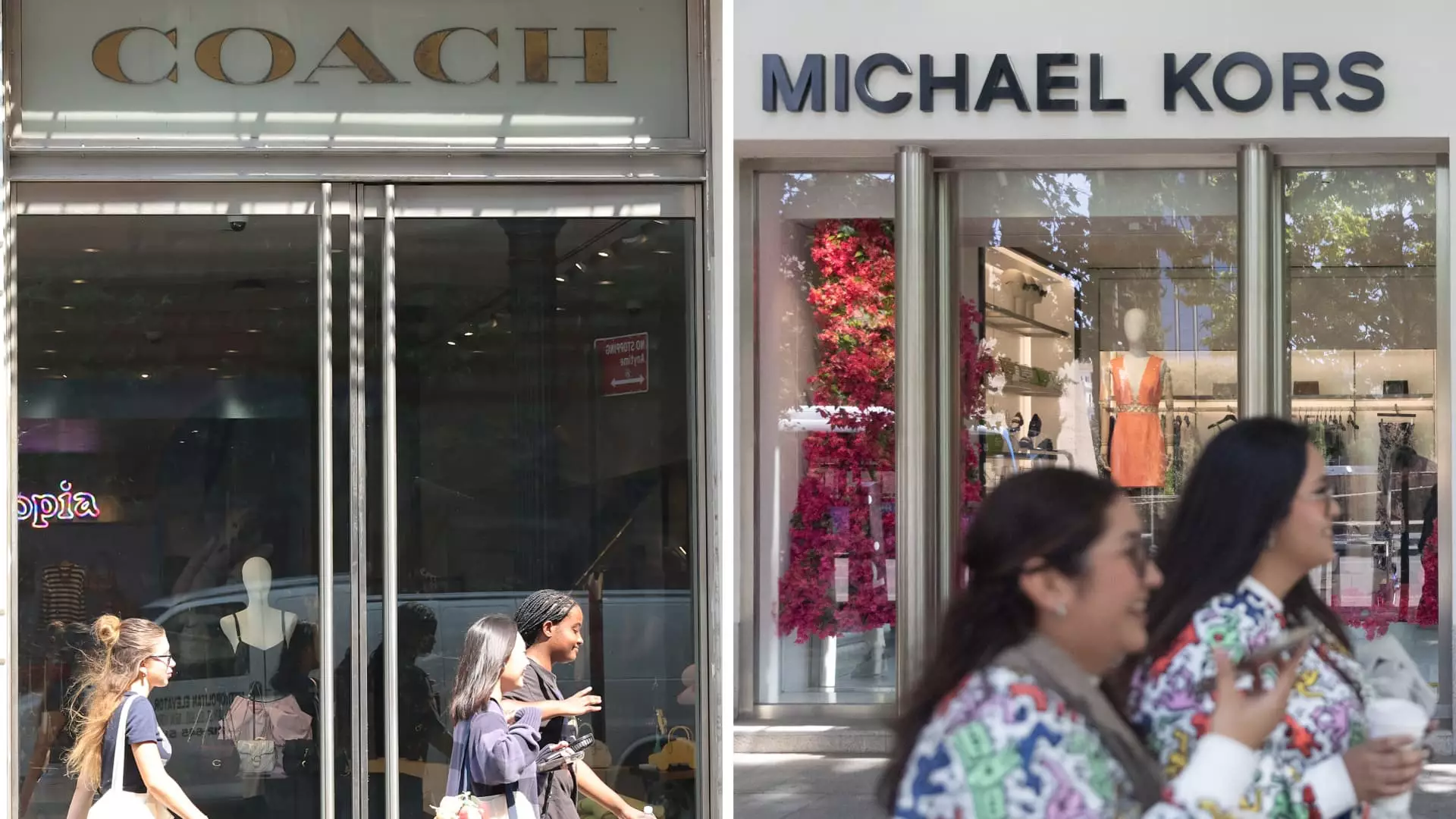In a significant legal development, Judge Jennifer Rochon has blocked Tapestry Inc.’s proposed acquisition of Capri Holdings Limited. This decision came after a brief trial in New York, revealing the complexities that underlie high-stakes merger negotiations within the luxury fashion industry. The planned merger, valued at approximately $8.5 billion, aimed to consolidate two of America’s leading luxury conglomerates. By merging Tapestry’s portfolio, which includes iconic brands such as Coach, Kate Spade, and Stuart Weitzman, with Capri’s esteemed labels like Versace, Jimmy Choo, and Michael Kors, the combined entity was set to establish a formidable presence in a highly competitive marketplace.
The Federal Trade Commission (FTC) acted as a gatekeeper in this merger process, filing a motion for a preliminary injunction to prevent the consolidation. The FTC expressed concerns that such a merger would reduce competition, particularly in the affordable luxury handbag market, ultimately disadvantaging consumers. The organization has increasingly taken a protective stance on competition, aiming to prevent mergers that could lead to monopolistic behaviors or inflated prices—a strategy that resonates with the broader push by the Biden administration to prioritize consumer rights amid rising inflation.
Tapestry’s response was proactive, as they announced their intention to appeal the ruling. The company argued that the merger would foster competition through combined efficiencies and better product offerings, countering the FTC’s perspective. Tapestry’s stock saw a notable surge of 10% following the announcement of the court’s decision, reflecting investor confidence in the appeal despite the disappointing news.
In the wake of the injunction, the financial implications for both companies became apparent. Tapestry agreed to reimburse Capri for expenses incurred during the acquisition process if the deal fell through—a measure that underscores the financial stakes involved in the merger. The specifics of the merger agreement also entail significant financial repercussions in the event of termination: Tapestry faces potential payments ranging from $30 million to $50 million to Capri, while Capri would have to pay a hefty breakup fee of $240 million should they pull out. These clauses highlight the inherent risks associated with corporate mergers, where both parties must navigate complex regulatory landscapes and public sentiment.
The ruling comes amid a unique economic landscape, characterized by heightened price sensitivity among consumers due to ongoing inflationary pressures. The luxury fashion sector is not exempt from these trends. As households reassess their spending amidst soaring costs, the accessibility of affordable luxury goods becomes increasingly important. Consumers are more discerning, prioritizing both quality and value. This environment adds a layer of complexity to the FTC’s arguments against the merger. While Tapestry contends that the consolidation would allow for quicker adaptation to trends and enhancements in product quality, critics argue that reduced competition could eventually harm the very consumers the luxury brands aim to serve.
The FTC’s insistence that the merger could lead to a decrease in quality and an increase in prices for handbags and other accessories echoes a broader narrative within the consumer advocacy community. The organization emphasized that maintaining robust competition in this sector is not merely a matter of corporate strategy but a fundamental consumer right.
The implications of the ruling extend beyond Tapestry and Capri. Regulatory trends under the leadership of FTC Chair Lina Khan have indicated a more aggressive approach towards mergers and acquisitions across various sectors, including grocery, technology, and apparel. By challenging major deals that risk excessive market concentration, the FTC aims to foster a healthier competitive environment that can ultimately benefit consumers.
As Tapestry prepares its appeal, the outcome will hinge not only on legal arguments but also on public perception and regulatory attitudes toward consumer rights in a post-COVID economy. The luxury fashion landscape is likely to continue evolving, marked by innovation in product offerings, adaptability to consumer trends, and a renewed focus on delivering value.
The decision by Judge Rochon to block the merger stands as a reminder of the delicate balance between corporate ambition and consumer protection. The outcomes of such high-profile legal battles will resonate widely, shaping the strategies of luxury brands and the experiences of consumers alike.


Leave a Reply